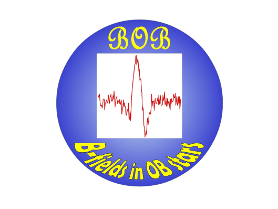| Name |
Affiliation |
|
| T. Morel |
AGO Department, University of Liège |
Principal Investigator |
| N. Castro |
University of Michigan, Ann Arbor |
Co-investigator |
| N. Langer |
Argelander Institute for Astronomy (AIfA), Bonn |
Co-investigator |
| R. Barbá |
Departamento de Física, Universidad de La Serena, La Serena, Chile |
Co-investigator |
| G. Mathys |
European Southern Observatory (ESO), Garching |
Co-investigator |
| M. Schöller |
European Southern Observatory (ESO), Garching |
Co-investigator |
| L. Fossati |
Space Research Institute, Graz |
Co-investigator |
| N. Przybilla |
Insbruck University, Insbruck |
Co-investigator |
| A. Piskunov |
Institute of Astronomy (INASAN), Moscow |
Co-investigator |
| A. Herrero |
Instituto de Astrofísica de Canarias (IAC), Tenerife |
Co-investigator |
| J. Maíz Apellániz |
Instituto de Astrofísica de Andalucía (IAA), Granada |
Co-investigator |
| S. Simon-Díaz |
Instituto de Astrofísica de Canarias (IAC), Tenerife |
Co-investigator |
| J. F. González |
Instituto de Ciencias Astronómicas, San Juan |
Co-investigator |
| F. Schneider |
Department of Physics, Oxford |
Co-investigator |
| R. Arlt |
Leibniz Institute for Astrophysics (AIP), Potsdam |
Co-investigator |
ndex.php | M. Briquet |
Leibniz Institute for Astrophysics (AIP), Potsdam |
Co-investigator |
| T. A. Carroll |
Leibniz Institute for Astrophysics (AIP), Potsdam |
Co-investigator |
| S. Hubrig |
Leibniz Institute for Astrophysics (AIP), Potsdam |
Co-investigator |
| I. Ilyin |
Leibniz Institute for Astrophysics (AIP), Potsdam |
Co-investigator |
| S. Järvinen |
Leibniz Institute for Astrophysics (AIP), Potsdam |
Co-investigator |
| A. Liermann |
Leibniz Institute for Astrophysics (AIP), Potsdam |
Co-investigator |
| R. Scholz |
Leibniz Institute for Astrophysics (AIP), Potsdam |
Co-investigator |
| N. Kharchenko |
Main Astronomical Observatory, Kiev |
Co-investigator |
| H. Spruit |
MPA, Garching |
Co-investigator |
| A. Reisenegger |
Pontificia Universidad Católica de Chile (PUC), Santiago |
Co-investigator |
| W.-R. Hamann |
Potsdam Universität, Potsdam |
Co-investigator |
| L. Oskinova |
Potsdam Universität, Potsdam |
Co-investigator |
| P. L. Dufton |
Queen's University, Belfast |
Co-investigator |
| A. Kholtygin |
Saint-Petersburg State University, St. Petersburg |
Co-investigator |
| S.-C. Yoon |
Seoul National University, Seoul |
Co-investigator |
| A. Irrgang |
Sternwarte, Universität Erlangen, Bamberg |
Co-investigator |
M.-F. Nieva |
Insbruck University, Insbruck |
Co-investigator |
| A. de Koter |
University of Amsterdam (UvA), Amsterdam |
Co-investigator |
| H. Sana |
KU Leuven |
Co-investigator |

